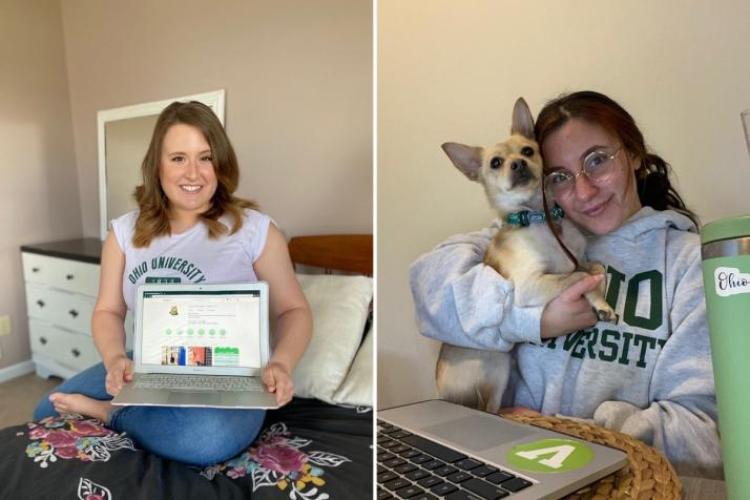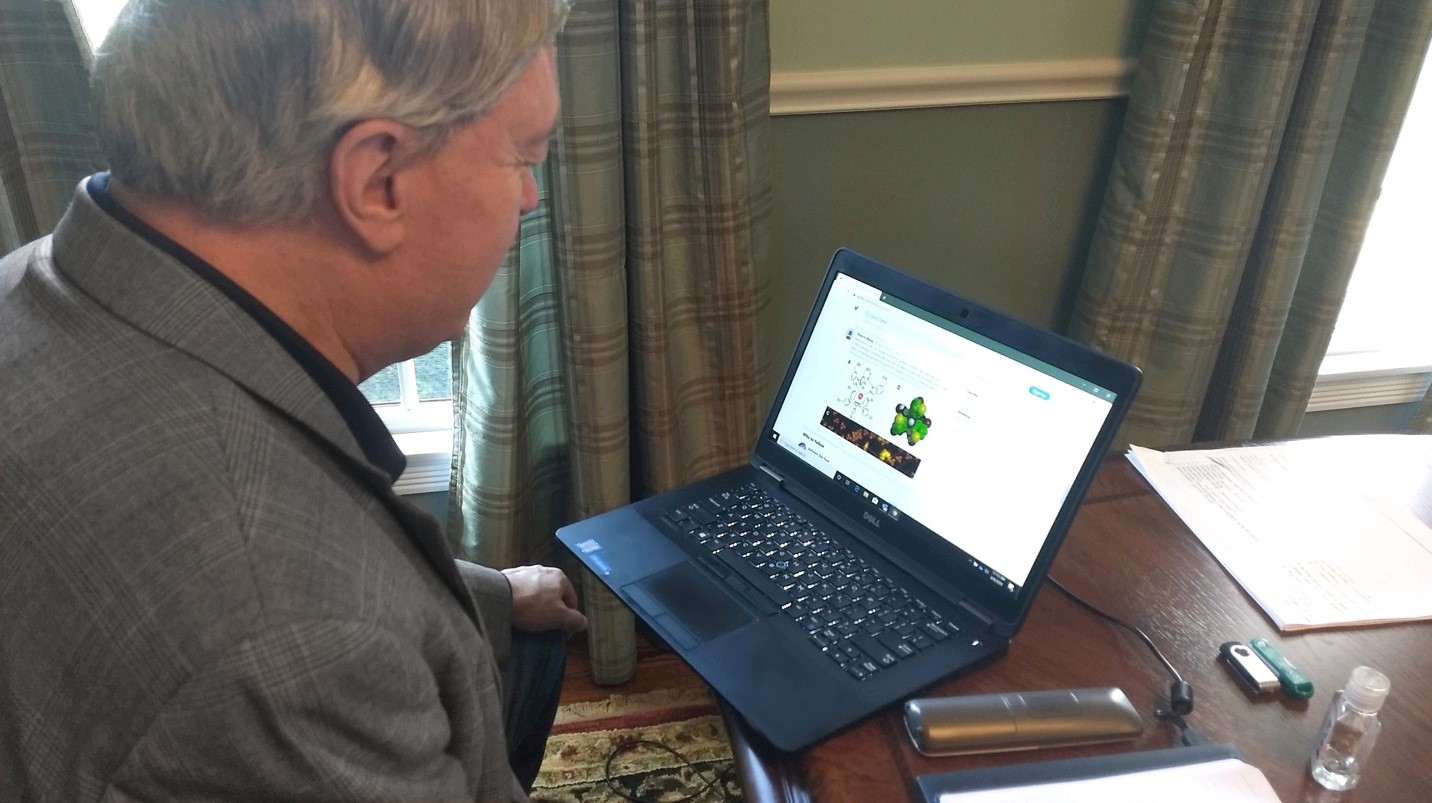
From the Convo to Social Media: OHIO keeps celebrating student research and creative works in a virtual world

Cami Post was looking forward to planning the biggest event of the school year for Ohio University student researchers and artists—the Student Expo—when the campus switched gears in mid-March to remote learning. Post, a senior visual communications major, had been serving as a designer and as part of the event planning team since her first year at OHIO, and was disappointed that she might not have a chance to close out her college career with one last Expo.
Post and fellow Ohio University students, faculty and staff involved with the Student Expo quickly stepped up to the challenge of translating a massive event of posters, presentations and audience interactions—which had been going strong at the Convocation Center for more than 15 years—to a virtual environment.
“After the decision to move everything online I was really upset, and missing my last Student Expo was one of the reasons. Changing the direction of the Expo to online was a mix of fear and excitement. I was happy to still be working the Expo, but nervous about how it was actually going to turn out.”
But the results totally exceeded everyone’s expectations.
The Research Division, in consultation with the planning team, took about one week to brainstorm and discard a few ideas before landing on the winning concept: a scholarly takeover of Twitter and Instagram.
Professor Larry Witmer, who has been involved in the Student Expo as an adviser and faculty mentor for many years, noted that the social media-focused event had advantages over having students make traditional live or recorded research presentations for the web. Many students and professors have Twitter or Instagram accounts, and these platforms provide an easy way to disseminate and share research information.
“The possibility of retweeting or sharing meant that student posts could have some element of virality, and indeed some students reported that they got more of a response than maybe any other social media post they’ve ever had,” Witmer said.
The Student Expo team surveyed students and faculty at the university to gauge interest in a social media version of the Expo, and began to plan the #OUVirtualExpo after receiving enough enthusiasm, said Riley Hoepfner, an anthropology and political science major who served as the lead Student Expo coordinator this school year.
“Everyone on our team had to put in a lot of hours and learn to do things they hadn’t done before, and we were all out of our comfort zone,” Hoepfner said. “However, I think everyone learned a lot and it was tons of fun.”
Post redesigned promotional materials for the new #OUVirtualExpo, and the student team ramped up the event’s Twitter and Instagram presence.
The team was hoping to attract at least 50 social media posts, which could be images or short videos with brief summaries about the research project or findings.
On Thursday, April 9, more than 300 OHIO student researchers and artists flooded Instagram and Twitter with stories, images and illustrations of their work. Like the Convocation Center version of the event, #OUVirtualExpo featured students from a wide variety of academic disciplines—from physics and engineering to journalism and theater costume design.
“It was so incredible to see how energetically students and faculty responded, both on the day of the Virtual Expo and after the event ended,” Hoepfner said, adding that the event gave students and faculty “the chance to participate in the close-knit academic community that many have been missing the past few weeks.”
The Student Expo is always a highlight of the spring semester for Ohio University President M. Duane Nellis, who was impressed with how the students were able to effectively transition their presentations so quickly for the Virtual Expo.
“Our students do incredible research and creative work, and it was exciting to see their work presented in this format this year,” President Nellis said.
Emma Chubb, a biological sciences major in the Honors Tutorial College, was one of the students who participated in the #OUVirtualExpo—and generated one of the most popular posts on both Twitter and Instagram. Chubb had been planning to present her study on the effects of nerve injury on chewing movements—which had been funded by an Ohio University Student Enhancement Award—with a poster at the Convocation Center. But after learning the event would go virtual, she worked with her adviser, Professor Susan Williams, on a very different concept of video and voiceover.
Chubb was pleased with how many of her fellow students, professors and university entities engaged with her research presentations on both social media platforms.
“I think Ohio University did a wonderful job promoting OHIO student research at the virtual expo,” Chubb said. “Various university accounts worked hard to repost and respond to research throughout the entire day. Ohio University really made students feel accomplished and valued during this uncertain time.”
Graduate student Cassie Thompson provided initial input on the #OUVirtualExpo concept to the Research Division planning team and participated in the actual event. She was not only impressed with how the #OUVirtualExpo turned out, but relished the opportunity to discuss research communication strategies for social media with fellow students prior to the event, she said.
“I think we as Bobcats have such a strong sense of place in Athens. The fact we were able to come together virtually for this event speaks volumes to the strong community we have at Ohio University,” Thompson said.
The other benefit of moving the Student Expo to social media platforms is that it showcased Ohio University student research for a much wider audience.
“I know that my students got not only retweets and likes from many countries, but got questions and comments—actual engagement—from people around the globe,” Witmer said.
Behind the scenes, both Hoepfner and Post were grateful for the important professional experience they gained with the #OUVirtualExpo this spring.
“I have benefited from working on the Expos so much that it’s hard to put into words,” Post said. “Having the opportunity to design the logo for an event this large on campus was such a learning experience and amazing opportunity. It taught me the logistics of things that need to be designed for an event after the original creation of a logo, branding, event planning and so much more! I will take these new skills and experiences with me into my career.”
